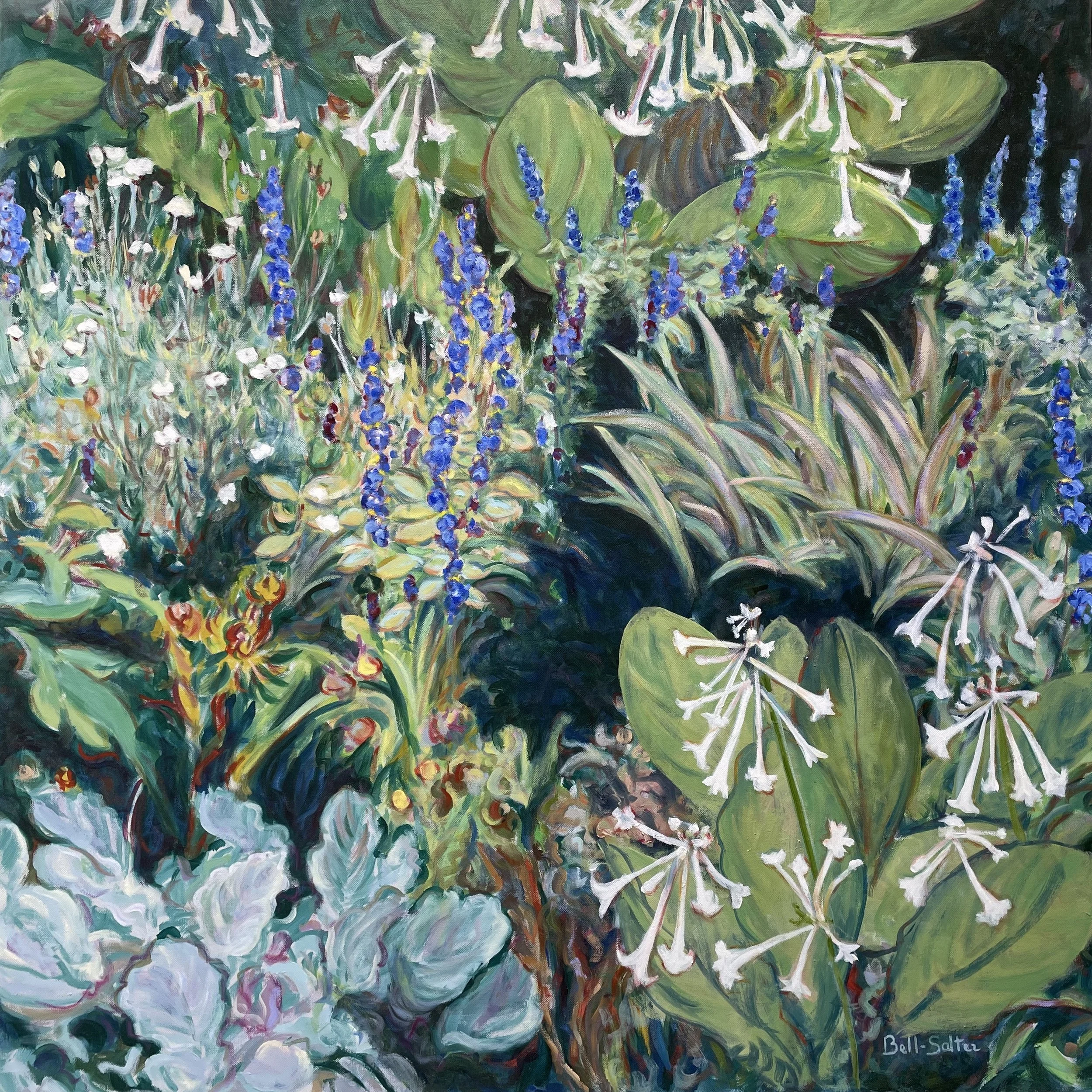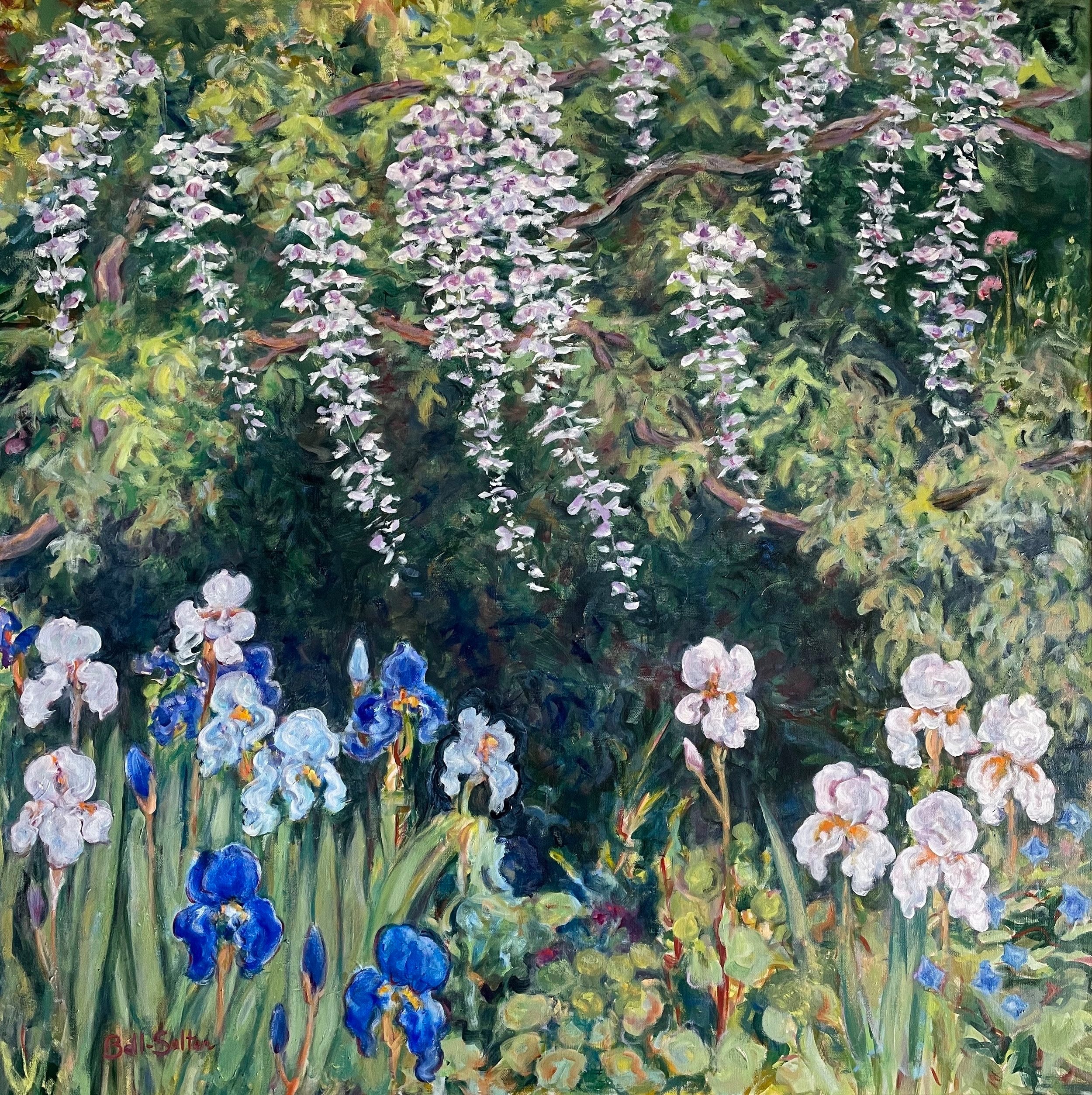GARDEN MUSEUM
Maria Bell-Salter. Fruition. Oil on linen 39 x 39 in.
FRUITION: Paintings by Maria Bell-Salter
7 February – 17 March 2024
Lambeth Palace Road
London, SE1 7LB
Open Monday to Sunday, 10am-5pm
www.gardenmuseum.org.uk
Maria Bell-Salter. Summer Whispers Oil on linen 39 x 39 in.
Introduction
Frances Spalding CBE, FRSL
Emeritus Fellow, Clare Hall, University of Cambridge
Flower painting occupies a significant role in the history of art. High points come readily to mind, among them the golden age of Dutch seventeenth-century flower-painting, rich in symbolism; Claude Monet’s pictures of his flower garden at Giverny, especially the some 250 paintings he did of waterlilies during the last thirty years of his life; and Cedric Morris’s wonderfully flamboyant paintings of irises, of which he himself cultivated many bearded varieties. But even though this is a much-populated terrain, Maria Bell-Salter’s flower paintings stand out as having a recognisable style and specific achievement of their own.
Hers is a name to conjure with in this field, partly because her enthusiasm for flowers is accompanied by a cultivated knowledge of art. Central to her education was the study of art history, which she afterwards taught. Key interests at this stage were French Impressionism and English Pre-Raphaelites. In addition, she had a love of nature and landscape. After a while she realised that the urge to paint herself took over from the desire to talk about the art of others. Having looked at many pictures, it did not seem necessary to seek art-school training and she plunged straight in. Eventually she moved to Paris, taking a studio there for seven years. One initial anxiety on setting out on her own was a fear of merely copying others, but this was overcome when she realised that standing on the shoulders of great artists was in fact a help in finding her own artistic personality.
So what is it that makes Bell-Salter’s paintings so rich and pleasurable? First, there is her ability to alter her method according to the season, her subject, or the scale of the picture. This adaptability seems to encourage a vigorous approach, and the spread and reach of the flowers and foliage often covers the full breadth and height of the canvas. This breeds a spirit of generosity and brings us very close to what is portrayed, be it tulips, agapanthus, irises, sunflowers, or hollyhocks. Sometimes a path of forget-me-nots wanders through a dense planting of tulips, or a darker mesh of earth and indeterminate foliage leads us in and around the tall allium stalks holding up delicate but large balls of flowers.
More usually in paintings of this genre, the flowers held up for our gaze are presented as if in another world, separated from us by a different, more pristine existence. But Bell-Salter’s burgeoning flowerbeds seem to invite us in, so that we too can become part of the growth and promise of nature. How very apt that this exhibition can be found in the Garden Museum for six weeks, from 7 February to 17 March, 2024.
Maria Bell-Salter, Tulip Cascade, Oil on linen 32 x 26 in.
Artist statement
The word, Fruition, signifies the realisation or fulfilment of a plan or project, also from the late Middle English it means – to enjoy, to delight in. Gardens, however ‘natural’ they may appear are a product of our own creation, one we have made to bring pleasure to ourselves and others as they mature and bloom.
My paintings of tulip beds and herbaceous borders immerse the viewer in vitality and colour – sometimes strong and vibrant, sometimes subtle with undefined mystery in the depths. Through this, I hope to convey a sense of the inspiration, joy and wonder that I feel at the sight of a garden brought to fruition.
E-catalogue
Any enquires, please feel free to contact studio@bell-salter.com













